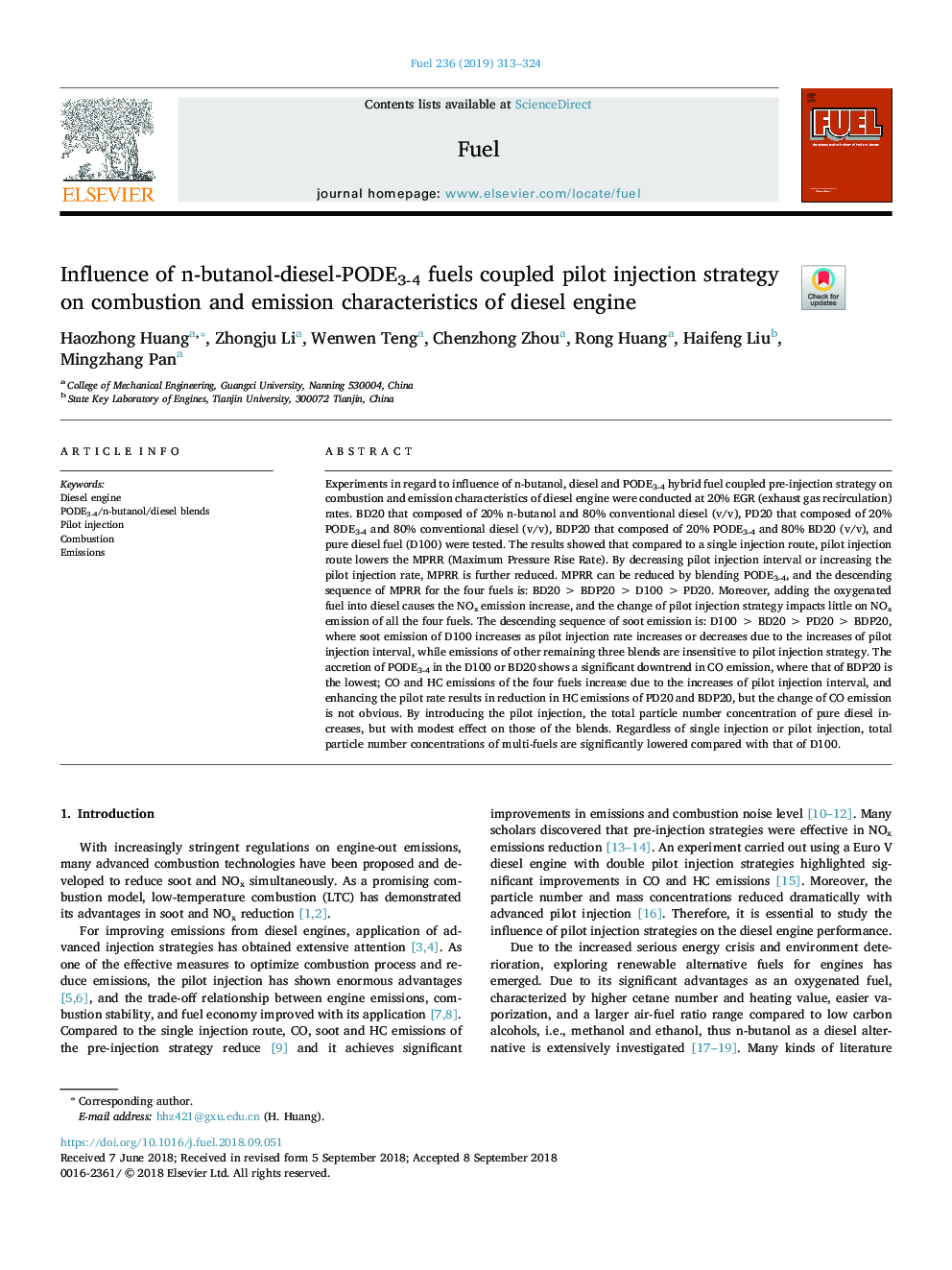| کد مقاله | کد نشریه | سال انتشار | مقاله انگلیسی | نسخه تمام متن |
|---|---|---|---|---|
| 10145413 | 1646362 | 2019 | 12 صفحه PDF | دانلود رایگان |
عنوان انگلیسی مقاله ISI
Influence of n-butanol-diesel-PODE3-4 fuels coupled pilot injection strategy on combustion and emission characteristics of diesel engine
دانلود مقاله + سفارش ترجمه
دانلود مقاله ISI انگلیسی
رایگان برای ایرانیان
کلمات کلیدی
موضوعات مرتبط
مهندسی و علوم پایه
مهندسی شیمی
مهندسی شیمی (عمومی)
پیش نمایش صفحه اول مقاله

چکیده انگلیسی
Experiments in regard to influence of n-butanol, diesel and PODE3-4 hybrid fuel coupled pre-injection strategy on combustion and emission characteristics of diesel engine were conducted at 20% EGR (exhaust gas recirculation) rates. BD20 that composed of 20% n-butanol and 80% conventional diesel (v/v), PD20 that composed of 20% PODE3-4 and 80% conventional diesel (v/v), BDP20 that composed of 20% PODE3-4 and 80% BD20 (v/v), and pure diesel fuel (D100) were tested. The results showed that compared to a single injection route, pilot injection route lowers the MPRR (Maximum Pressure Rise Rate). By decreasing pilot injection interval or increasing the pilot injection rate, MPRR is further reduced. MPRR can be reduced by blending PODE3-4, and the descending sequence of MPRR for the four fuels is: BD20â¯>â¯BDP20â¯>â¯D100â¯>â¯PD20. Moreover, adding the oxygenated fuel into diesel causes the NOx emission increase, and the change of pilot injection strategy impacts little on NOx emission of all the four fuels. The descending sequence of soot emission is: D100â¯>â¯BD20â¯>â¯PD20â¯>â¯BDP20, where soot emission of D100 increases as pilot injection rate increases or decreases due to the increases of pilot injection interval, while emissions of other remaining three blends are insensitive to pilot injection strategy. The accretion of PODE3-4 in the D100 or BD20 shows a significant downtrend in CO emission, where that of BDP20 is the lowest; CO and HC emissions of the four fuels increase due to the increases of pilot injection interval, and enhancing the pilot rate results in reduction in HC emissions of PD20 and BDP20, but the change of CO emission is not obvious. By introducing the pilot injection, the total particle number concentration of pure diesel increases, but with modest effect on those of the blends. Regardless of single injection or pilot injection, total particle number concentrations of multi-fuels are significantly lowered compared with that of D100.
ناشر
Database: Elsevier - ScienceDirect (ساینس دایرکت)
Journal: Fuel - Volume 236, 15 January 2019, Pages 313-324
Journal: Fuel - Volume 236, 15 January 2019, Pages 313-324
نویسندگان
Haozhong Huang, Zhongju Li, Wenwen Teng, Chenzhong Zhou, Rong Huang, Haifeng Liu, Mingzhang Pan,